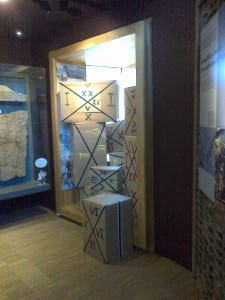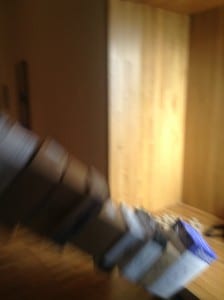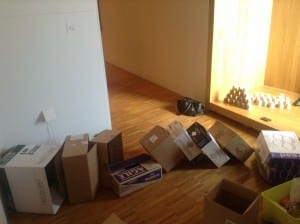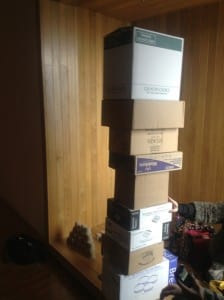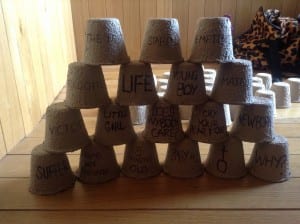So having performed it was now time to evaluate. Of course I was very pleased with how it went, something we’d developed for so long had finally come together and with positive feedback I felt we’d achieved what we set out to do. In fact a man came up to us after our performance and happened to comment on how he liked the fact we walked from one window to the other, he said the looks on our faces showed we looked like we had one purpose and that was to deliver the boxes, but that he knew he wanted to follow us. This gave me reason to believe we had a positive effect on audience members as they were interested and were keen to follow us on our journey.
With performing, there is always room to improve or develop. If we were going to do it again I would increase the volume of the recording, as it wasn’t loud enough and wasn’t heard. We felt this was a real shame as the words possessed meaning. Because of the area we were in not many people come there so we assumed the level to which we had been practising would have been sufficient, however there was a lot more noise the day we performed. In hindsight we should have anticipated the hustle and bustle of the weekend. The volume on the TV situated in the area wasn’t low enough and this most probably contributed to the lack our hearing for the recording as well. One thing I have learned is the importance of keeping people up to date with your practices as one of the managers of the site wasn’t aware we were using paint, this is something we thought we had cleared with them which later boiled down to a miscommunication.
If I was to expand on from this I think there are some great things we could do with the performance! I can see the journey of the walk being developed, perhaps walking all around the gallery. The walls could become much larger in scale; we could fill more areas and do it over a longer period of time. The possibilities are pretty much endless for the construction and deconstruction of space and not to mention quite exciting really as it would mean a much bigger statement and invasion of space.
Word count: 393
